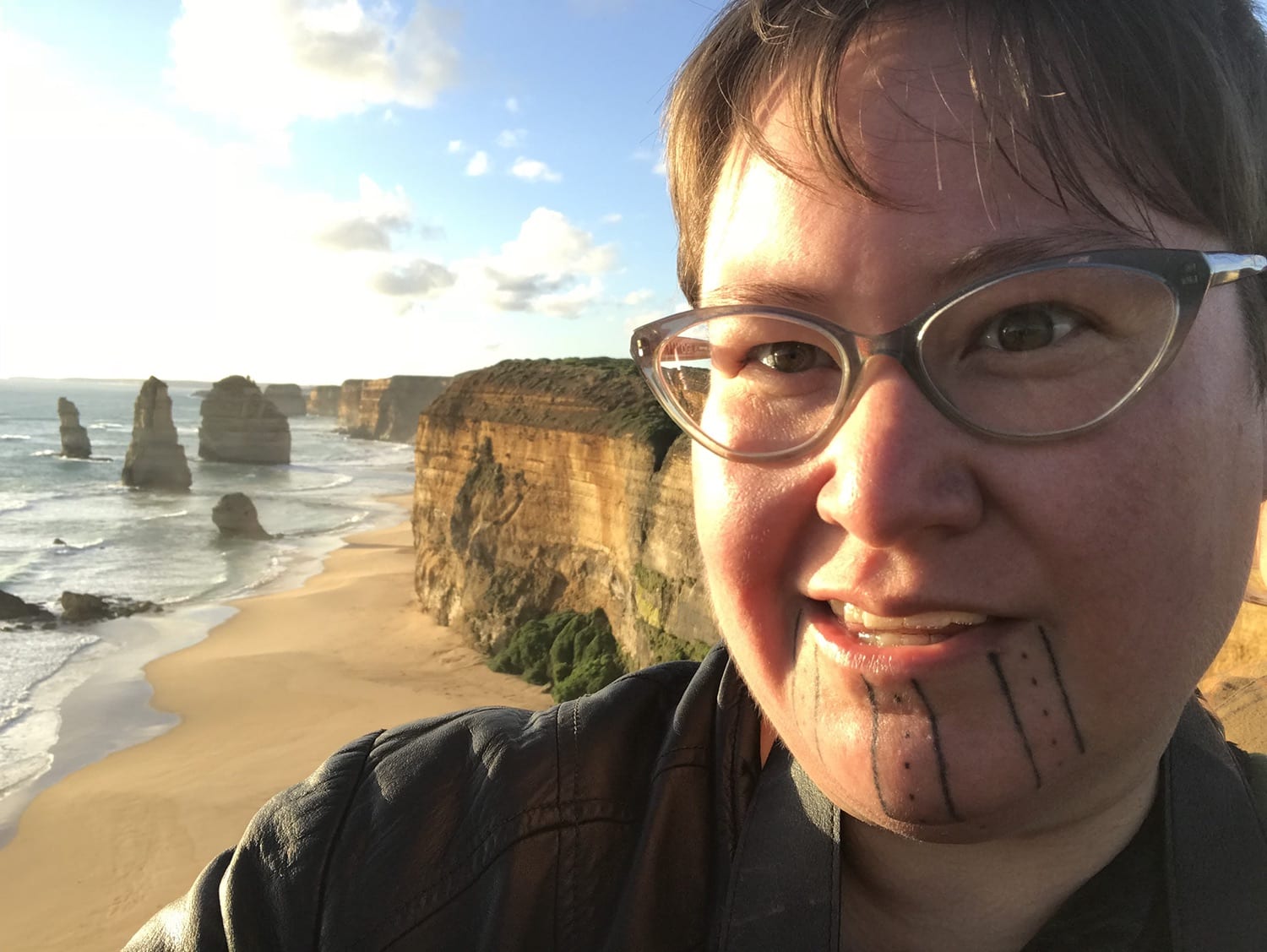For all of us who feel isolated in cisnormative and heteronormative spaces and places, the work of Cree-Métis artist and filmmaker Thirza Cuthand has been a beacon of light. I’ve studied her work extensively, and it’s shown me that it’s possible to see myself represented on screen—and possible for us to speak our truths.
In 2018, I curated “Loner Culture” for InterAccess and ImagineNative, an exhibition that featured Cuthand’s work, in part to represent the huge debt owed to her by my generation of Indigenous queer, trans and Two-Spirit creators. Now, this month, Cuthand is receiving an artist’s spotlight at the 2020 ImagineNative Film Festival—an honour that’s long overdue. I spoke with her for the occasion.
What drew you to film?
I liked being able to watch a story unfold. And there were no representations of Indigenous people, queer people or queer and lesbian teenagers in the ’90s. I wanted to create representations of myself and my communities.
You are very unapologetic; you move between lesbian discourse and Indigenous identity freely. Did that occur to you when you made the work, or did you just want to speak your truth?
I just wanted to make my truth and say what I wanted to say. When I was younger, I had a lot of opinions. I was more like, “This is just the way it is,” and “I’m going to make a film about the way it is.” Now that I’m older, I think I have more questions. In the beginning, it was more personal stories that I was interested in. Now, it’s more community-based stories.
Film is such a masculinist field, and you represent queer and lesbian storylines. Did you feel like you were doing activist work, or pushing for better and more representations, when you were making your early work?
I never really thought of it that way. I was just making what I wanted to make. So much of it was low-budget or no budget. It’s been a long climb to get where I am. But I wasn’t really thinking about who was coming after me. I mean, I kind of was, because I was obviously making work so that people would see themselves represented. And to some degree, I was making stuff with really low budgets because I wanted people to be inspired and feel like they [could] also make work. But it’s hard for me to think of my work that way.
“The industry doesn’t know how they can get mainstream appeal out of marginalized people within minority communities”
Did you feel like you experienced different barriers in the industry when you were trying to break in?
I think so. The film industry is built for white, cisgender, straight people. Even when you get into Indigenous filmmaking… any minority community tries to appeal to the mainstream at a certain point in their history. The industry doesn’t know how they can get mainstream appeal out of marginalized people within minority communities. That’s why I made weird little arty films for so long: You don’t have to have huge budgets to make an experimental film.
What are you excited about right now? It seems like there’s a momentum to your career.
I’m doing an industry film right now—we actually have a crew and cast. The film is a short based on a feature that I’m also writing. It’s been a definite shift in the way I work; I’m learning how industry filmmaking works. I think it’s about different tools for different jobs. The industry work I’ve done, it’s a way to tell the stories I want to tell. And then there are other times when I want to make something that’s more arty, something that’s more suited to different personal or community-based stories.
I know that queer Indigenous folks are often hounded with questions about representation and not about craft. But I do want to ask you that stereotypical question: How do you approach the representation of queer people in your work?
“I can’t conceive of myself making a film where there’s not an Indigenous lesbian or Indigenous queer person”
In all of my videos, there’s representations of queer people. In the “Two-Spirit Introductory Special” and “Two-Spirit Dream Catcher” videos, I tried to present a cross-section of the Two-Spirit community. But I can’t conceive of myself making a film where there’s not an Indigenous lesbian or Indigenous queer person. I have the skills to make films and videos, and I don’t want to waste them making more representations of people who are already overrepresented. It’s fine to see those stories, but those aren’t the ones I’m interested in telling.
Do you frequently work with Two-Spirit people who you have a close connection with?
Ever since film school, it’s been me asking my friends to help me make videos and stuff. And my friends are mostly queer Indigenous people. Elwood Jimmy shows up in my videos at least three times as an actor. We have that kind of relationship where he appears. Sometimes he acts, and sometimes he acts as himself. I’ll ask friends to step in. I’m starting to ask people in the industry to do stuff, though.
What advice would you give to an emerging artist?
If there’s a teenage lesbian Indigenous person in their bedroom reading this, or anybody, really: Use whatever you have around to make a video if you want to make videos. Don’t let budgets scare you. Don’t feel like you have to have a grant, or you have to have permission to make your work. I think you should just make it with whatever you have.


 Why you can trust Xtra
Why you can trust Xtra


